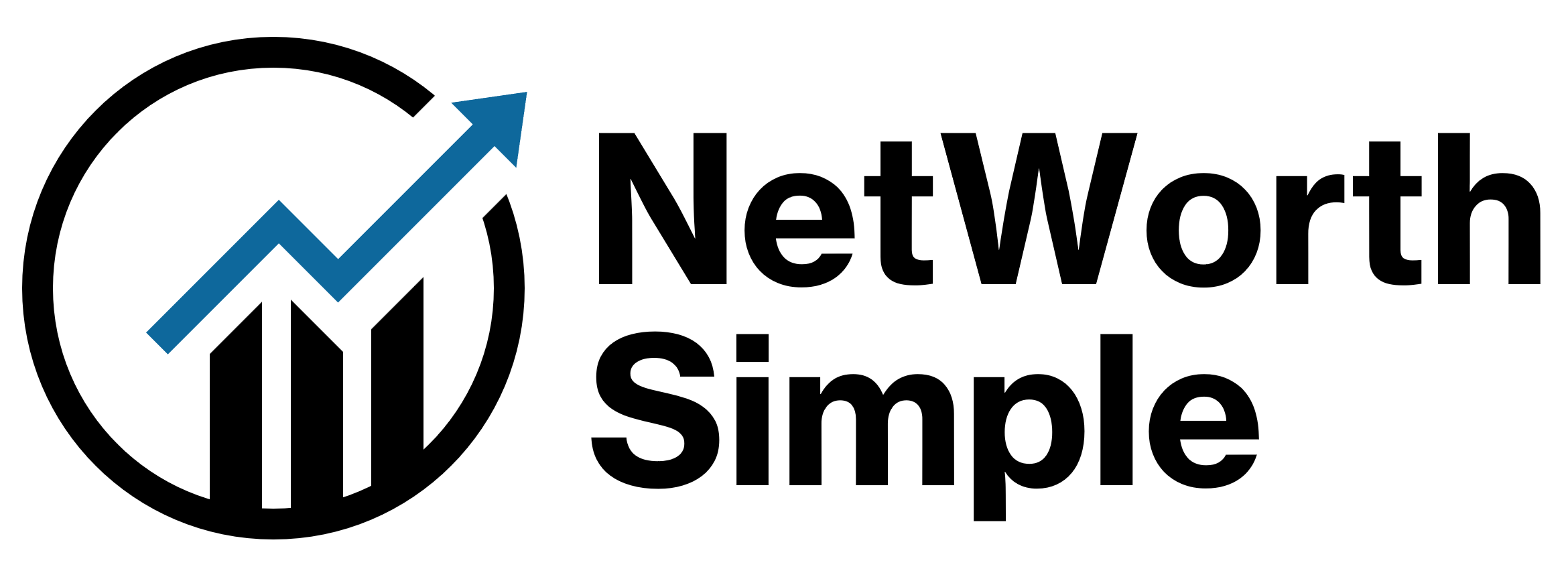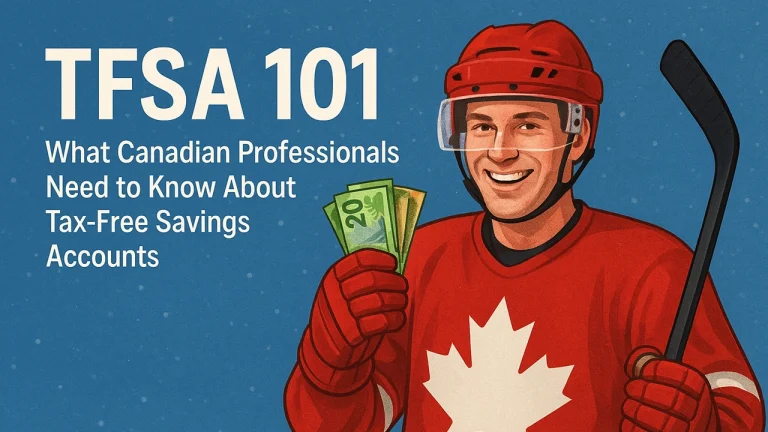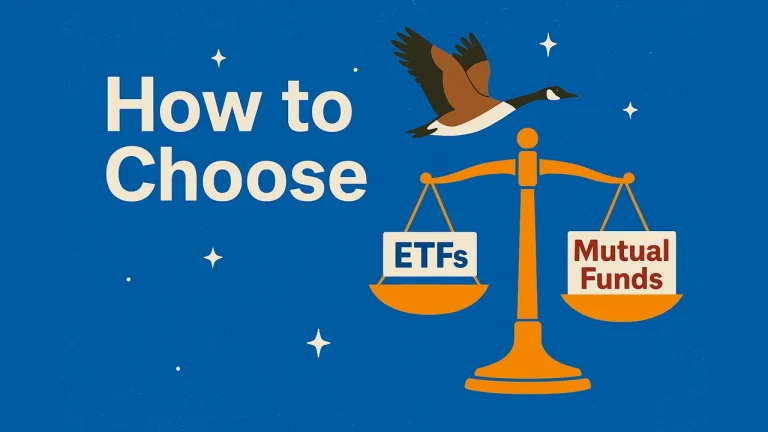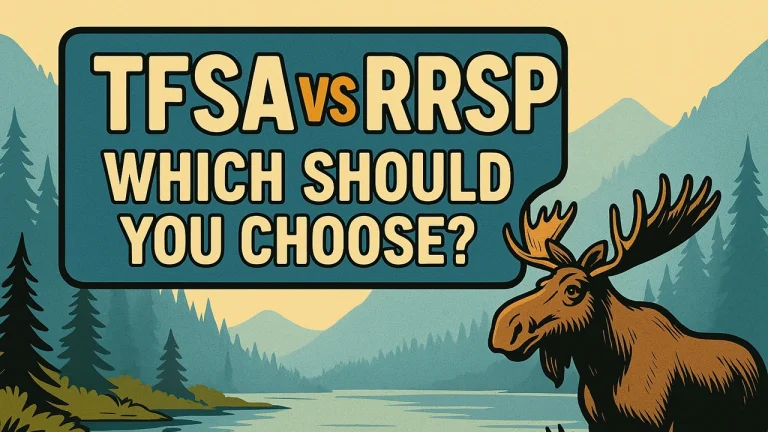RRSP 101: Everything Busy Canadians Need to Know About Retirement Savings (2025)
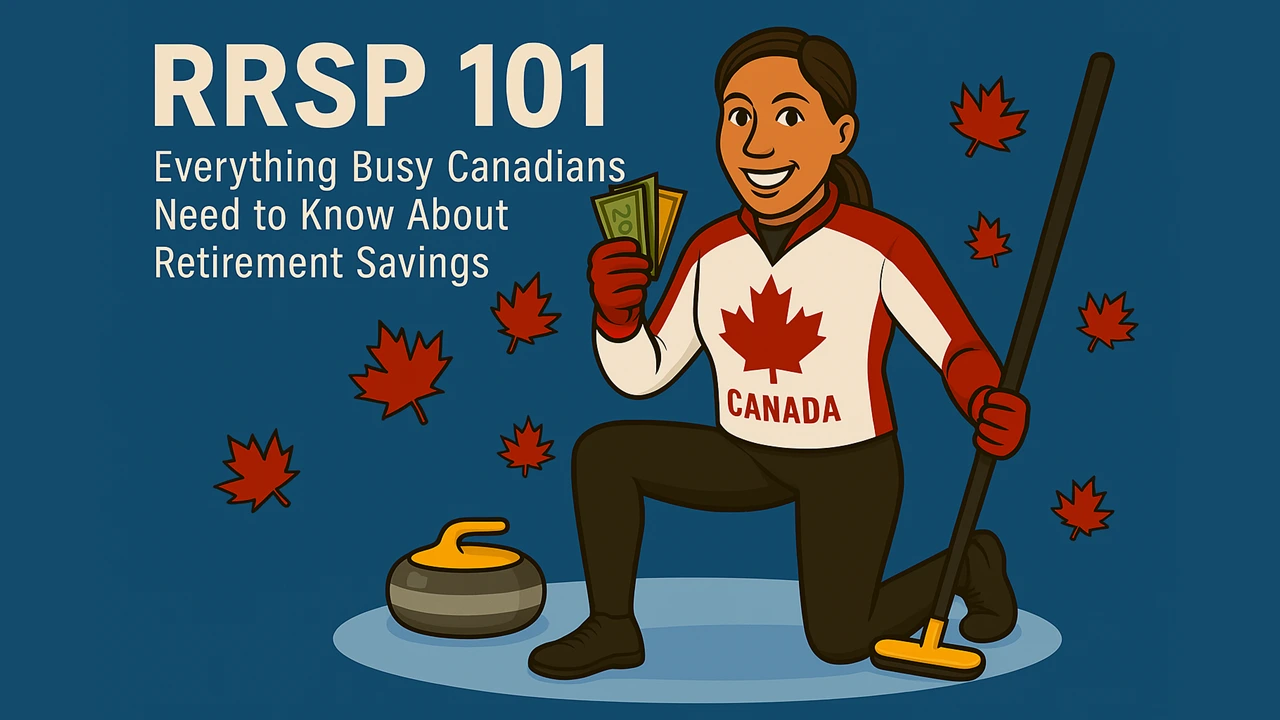
Struggling to figure out how registered retirement savings plans (RRSPs) actually work — or if they’re even worth it anymore? You’re not alone — and the confusion could be costing you thousands in lost tax savings and retirement growth.
Whether you’re just starting your career or earning six figures, understanding the power of a Registered Retirement Savings Plan can help you reduce taxes today and build long-term wealth. The good news? It’s easier to get started than most people think.
This guide breaks down RRSPs in plain language — no financial jargon, no fluff — so you can make smarter decisions without spending hours researching. Learn how to contribute, invest, withdraw, and avoid common mistakes.
Let’s get into what Canadian professionals really need to know to take full advantage of their RRSP in 2025.
Quick Summary
- 📉 RRSP contributions reduce your taxable income, saving you money on taxes today.
- 💼 Designed for Canadian professionals to grow retirement savings tax-deferred.
- 📊 You can hold a variety of investments like ETFs, stocks, bonds, and GICs inside your RRSP.
- 🚪 Withdrawals are taxed as income, but special programs like the Home Buyers’ Plan allow tax-free access.
- ⏰ Start early and contribute regularly to maximize growth and benefits over time.
What Is an RRSP and How Does It Work?
Registered Retirement Savings Plans (RRSPs) are one of the most powerful tools Canadian professionals can use to reduce taxes today and grow their wealth for tomorrow. This section breaks down how RRSPs work, who can open one, and what types of investments you can hold inside the account.
💡 Pro Tip
Ready to take a deeper dive into investing fundamentals?
📖 Explore our comprehensive Beginner’s Guide to Investing in Canada — built specifically for Canadian professionals.
The Basics of an RRSP
An RRSP is a government-registered account that lets you contribute a portion of your income each year and deduct those contributions from your taxable income. This can result in a significant tax refund — especially if you’re in a higher tax bracket.
Once your money is inside an RRSP, it grows tax-deferred. That means you won’t pay taxes on dividends, interest, or capital gains until you withdraw the money, ideally in retirement when your income (and tax rate) is lower. This tax-deferral allows your savings to grow faster than they would in a regular taxable account.
RRSPs aren’t investments themselves — they’re like a container that holds your investments. You choose what goes inside based on your goals, timeline, and risk tolerance.
Who Is Eligible to Open an RRSP?
Anyone with earned income in Canada can open and contribute to an RRSP, as long as they’re:
- A Canadian resident for tax purposes
- Under the age of 71
- Filing a Canadian tax return that reports eligible income (e.g., employment income, self-employment, rental income)
You don’t need to wait until you’re earning six figures — even modest contributions can add up over time, especially when you start early and invest consistently.
You can open an RRSP at most financial institutions, including banks, online brokerages, robo-advisors, or through a financial advisor.
What Can You Hold in an RRSP?
Similar to a tax-free savings account (TFSA), your RRSP can hold a wide variety of qualified investments, including:
- Cash / High-interest savings deposits
- Exchange-Traded Funds (ETFs)
- Publicly traded stocks (Canadian and U.S.)
- Government and corporate bonds
- Mutual funds
- Guaranteed Investment Certificates (GICs)

The goal is to match your investments with your retirement timeline. For example, younger professionals might invest more heavily in growth-oriented ETFs and stocks, while those closer to retirement may prefer a more conservative mix of bonds and GICs.
However, not everything is allowed. Foreign private shares, cryptocurrency, and collectibles (like art or gold bars) generally do not qualify.
RRSP Contribution Limits in 2025
Knowing how much you can contribute to your RRSP is key to maximizing your tax savings — and avoiding penalties. Contribution limits are updated each year by the federal government based on earned income and inflation.
What Is the RRSP Contribution Limit for 2025?
For the 2025 tax year, the maximum RRSP contribution limit is 18% of your earned income from the previous year, up to a cap of $32,490 (up from $31,560 in 2024).
For example, if you earned $100,000 in 2024, your RRSP limit for 2025 would be $18,000.
How RRSP Contribution Room Is Calculated
Your RRSP contribution room accumulates each year, even if you don’t contribute. It’s based on:
- 18% of earned income from the previous tax year (up to the annual limit)
- Minus any pension adjustments (for those with workplace pensions)
- Plus any unused contribution room from previous years
You can carry forward unused contribution room indefinitely — a great option if you want to contribute more later when your income is higher.
Where to Find Your RRSP Contribution Room
The easiest way to find your current contribution room is to:
- Log in to your CRA My Account online
- Check your latest Notice of Assessment from your tax return
Your contribution limit resets every calendar year on January 1, and you have until the RRSP deadline (usually early March of the following year) to make contributions for the previous tax year.
What Happens If You Overcontribute?
The CRA allows a lifetime buffer of $2,000 over your limit, but anything beyond that may trigger a penalty of 1% per month on the excess amount.
Overcontributions can be fixed, but it’s best to track your limits carefully to avoid costly surprises.
How Do You Open an RRSP?
Opening an RRSP is easier than most people think — and you don’t need to be a finance expert or already wealthy to get started. In this section, you’ll learn where to open one, what you need, and how to choose the right type of RRSP for your needs.
Types of Institutions Where You Can Open an RRSP
You can open an RRSP at a variety of financial institutions in Canada, depending on how hands-on you want to be:
- Banks and Credit Unions
Most traditional banks like RBC, TD, Scotiabank, and credit unions offer RRSPs with savings accounts, GICs, or mutual funds. These are convenient but often come with higher fees and limited investment options. - Online Brokerages
If you prefer to pick and manage your own investments (like ETFs or stocks), platforms like Questrade, Wealthsimple Trade, or TD Direct Investing offer self-directed RRSPs with more control and lower fees. - Robo-Advisors
For a more hands-off approach, robo-advisors like Wealthsimple Invest or Questwealth build and manage a diversified ETF portfolio for you — ideal for professionals who want simplicity and automation. - Financial Advisors or Investment Firms
You can also open an RRSP through a financial advisor or wealth management firm, especially if you want personalized advice or estate planning support.
What You’ll Need to Open an Account
Opening an RRSP usually takes less than 30 minutes. Here’s what you’ll typically need:
- Government-issued ID (e.g. driver’s license or passport)
- Social Insurance Number (SIN)
- Bank account information (for contributions or transfers)
- Employment and financial information (especially for robo-advisors or advisors building a portfolio for you)
Many providers let you apply online with instant approval and digital document uploads.
Types of RRSPs: Which One Is Right for You?
Not all RRSPs are the same — and choosing the right kind can help you save more efficiently and avoid unnecessary fees or tax issues down the line. The four most common RRSP setups are Self-Directed, Managed, Spousal, and Group. While some overlap in structure and purpose, each serves a different role depending on your goals, income, and investing style.
The table below breaks down the key features of each.
|
RRSP Type |
Who It’s For |
Key Features |
Pros |
Cons |
|---|---|---|---|---|
|
Self-Directed RRSP |
DIY investors or those working with advisors |
You manage your own investments (e.g. ETFs, stocks, bonds) |
|
|
|
Managed RRSP |
People who want expert help or automation |
Investment choices are made for you (e.g. via advisor or robo-advisor) |
|
|
|
Spousal RRSP |
Couples with unequal income |
One spouse contributes; the other owns the account (used for income splitting) |
|
|
|
Group RRSP |
Employees with access to employer plans |
Offered through the workplace with payroll contributions and possible matching |
|
|
⚠️ Can These RRSP Types Overlap?
Yes — and often do:
- A Spousal RRSP can be either self-directed or managed
- A Group RRSP is often managed by a third-party provider or advisor
- You might have multiple RRSPs of different types, depending on your situation
For example, a high-income professional might contribute to a self-directed RRSP for full control, a group RRSP through their employer, and a spousal RRSP to lower household taxes in retirement.
Withdrawals: What You Need to Know
Understanding RRSP withdrawals is crucial — taking money out before retirement can lead to unexpected taxes and penalties, but some government programs allow you to withdraw funds tax-free under specific conditions.
Tax Implications of RRSP Withdrawals
When you withdraw money from your RRSP, the amount counts as taxable income in that year. The financial institution usually withholds a portion of the withdrawal as tax at source, but depending on your total income, you may owe more or get a refund when you file your taxes.
Withholding Tax Rates
The amount withheld depends on the withdrawal size and your province of residence:
- Up to $5,000: 10% (5% in Quebec)
- $5,001 to $15,000: 20% (10% in Quebec)
- Over $15,000: 30% (15% in Quebec)
Note: This withholding tax is a prepayment — the final tax owed will be calculated on your tax return.
Home Buyers’ Plan (HBP)
The HBP allows first-time homebuyers to withdraw up to $35,000 from their RRSP tax-free to put toward a down payment. The catch? You must repay the amount to your RRSP over 15 years to avoid paying taxes on the withdrawn funds.
Lifelong Learning Plan (LLP)
The LLP lets you withdraw up to $10,000 per year (max $20,000 total) from your RRSP to finance full-time education or training for yourself or your spouse. Like the HBP, withdrawals must be repaid over a set schedule.
Converting Your RRSP to an RRIF
By the end of the year you turn 71, you must convert your RRSP into a Registered Retirement Income Fund (RRIF) or another retirement income vehicle. RRIFs provide you with a minimum annual withdrawal amount — which is taxable income — but allow your investments to continue growing tax-deferred.
Common RRSP Mistakes to Avoid
Making the most of your RRSP means knowing the traps that can eat away at your savings or trigger unexpected taxes. Here are some of the most common mistakes Canadian professionals make — and how to avoid them.
1. Overcontributing Beyond Your Limit
Contributing more than your RRSP room plus the $2,000 grace amount can result in a 1% per month penalty tax on the excess. Always check your CRA My Account or Notice of Assessment to know your exact contribution limit.
2. Waiting Too Long to Start Contributing
The power of RRSPs lies in tax-deferred compounding. Delaying contributions means missing out on years of growth, which can significantly reduce your retirement nest egg.
3. Withdrawing Funds Early Without a Plan
Early withdrawals are fully taxable and can trigger withholding tax. Unless you qualify for programs like the Home Buyers’ Plan or Lifelong Learning Plan, avoid dipping into your RRSP prematurely.
4. Ignoring Low-Fee Investment Options
High fees can seriously reduce your long-term returns. Opt for low-cost ETFs or index funds over expensive mutual funds or frequent trading.
5. Not Using Spousal RRSPs to Split Income
Couples often overlook spousal RRSPs, which can lower the overall household tax burden in retirement by splitting income more evenly.
6. Failing to Automate Contributions
Busy professionals are more likely to miss regular contributions. Automating your RRSP deposits helps you stay consistent and take advantage of dollar-cost averaging.
RRSP Tips for Busy Professionals
Maximizing your RRSP doesn’t have to be complicated or time-consuming. Here are smart, actionable tips to help you save efficiently — even with a packed schedule.
1. Automate Your Contributions
Set up automatic monthly transfers from your bank account to your RRSP. This “set it and forget it” approach keeps your savings on track without you having to think about it.
2. Use Your Tax Refund Wisely
When you get an RRSP tax refund, consider reinvesting it back into your RRSP or using it to pay down high-interest debt. This can accelerate your financial goals significantly.
3. Consider a Spousal RRSP
If one partner earns significantly more, contributing to a spousal RRSP can help split retirement income and reduce overall household taxes.
4. Choose Low-Fee Investments
Prioritize low-cost ETFs or index funds to keep your investment fees low and grow your savings faster over time.
5. Take Advantage of Employer Group RRSPs
If your employer offers a group RRSP with matching contributions, contribute enough to get the full match — it’s essentially free money.
6. Review Your RRSP Annually
Set a calendar reminder to review your RRSP contributions, investment performance, and limits once a year. Adjust as needed to stay aligned with your retirement goals.
Conclusion
RRSPs remain a cornerstone of retirement planning for Canadian professionals, offering significant tax advantages and opportunities for long-term wealth growth. To make the most of your RRSP, keep these key points in mind:
- 💰 Contribute consistently and take advantage of your annual contribution limit to maximize tax savings.
- 🚫 Understand your RRSP withdrawal options and avoid early withdrawals unless using government programs like the Home Buyers’ Plan.
- 📈 Choose investment options that align with your risk tolerance and keep fees low to boost your returns.
- 🤝 Consider strategies like spousal RRSPs and employer group plans to optimize tax efficiency and savings.
- 🔄 Regularly review and adjust your RRSP contributions and investments to stay on track with your retirement goals.
By staying informed and proactive, you can harness the full power of your RRSP and build a secure financial future — even with a busy professional lifestyle.
